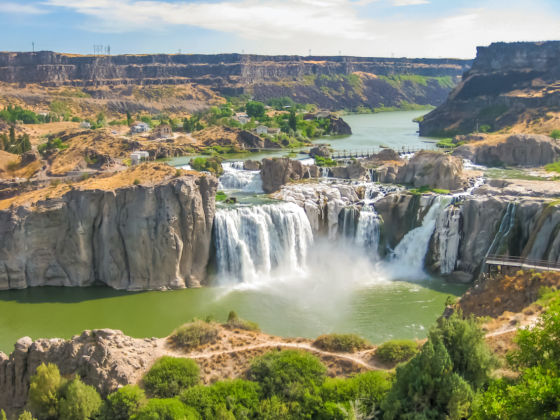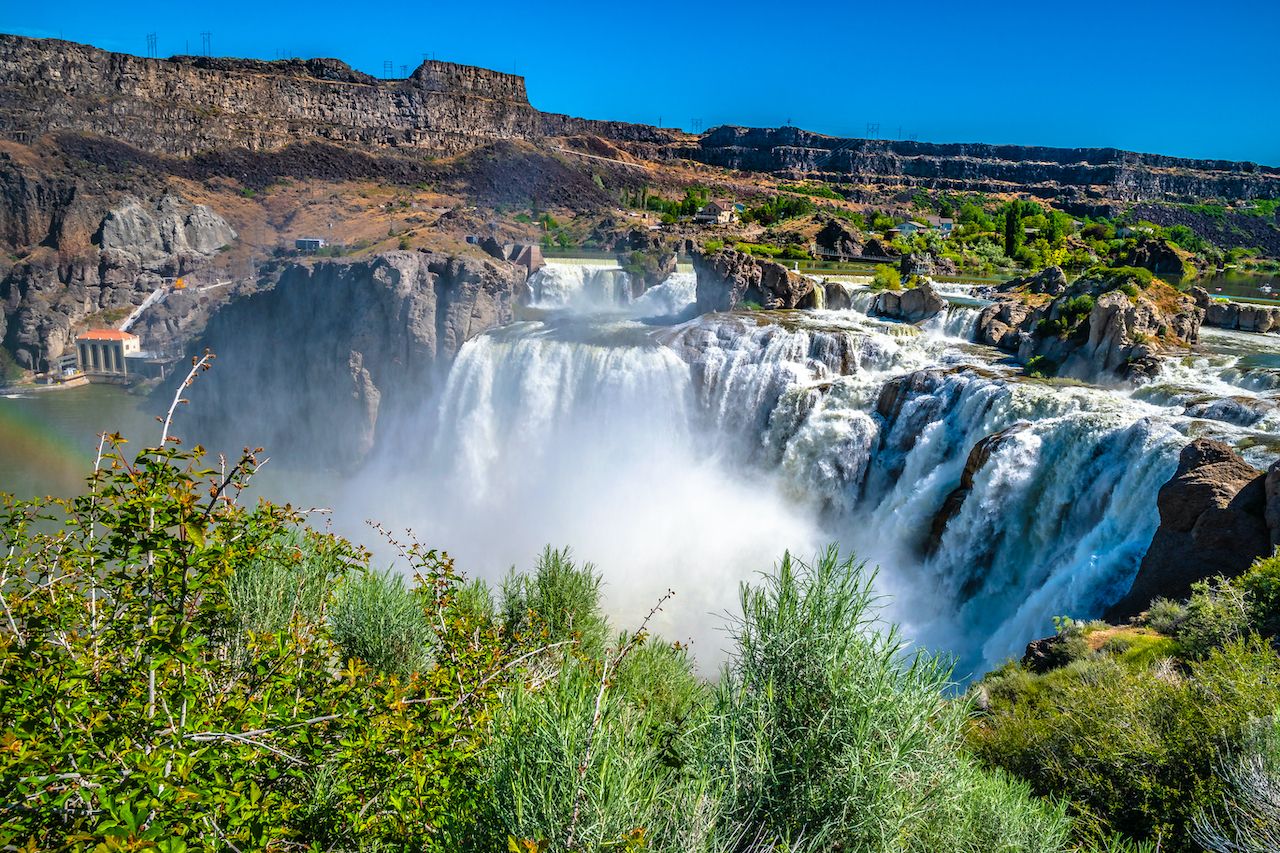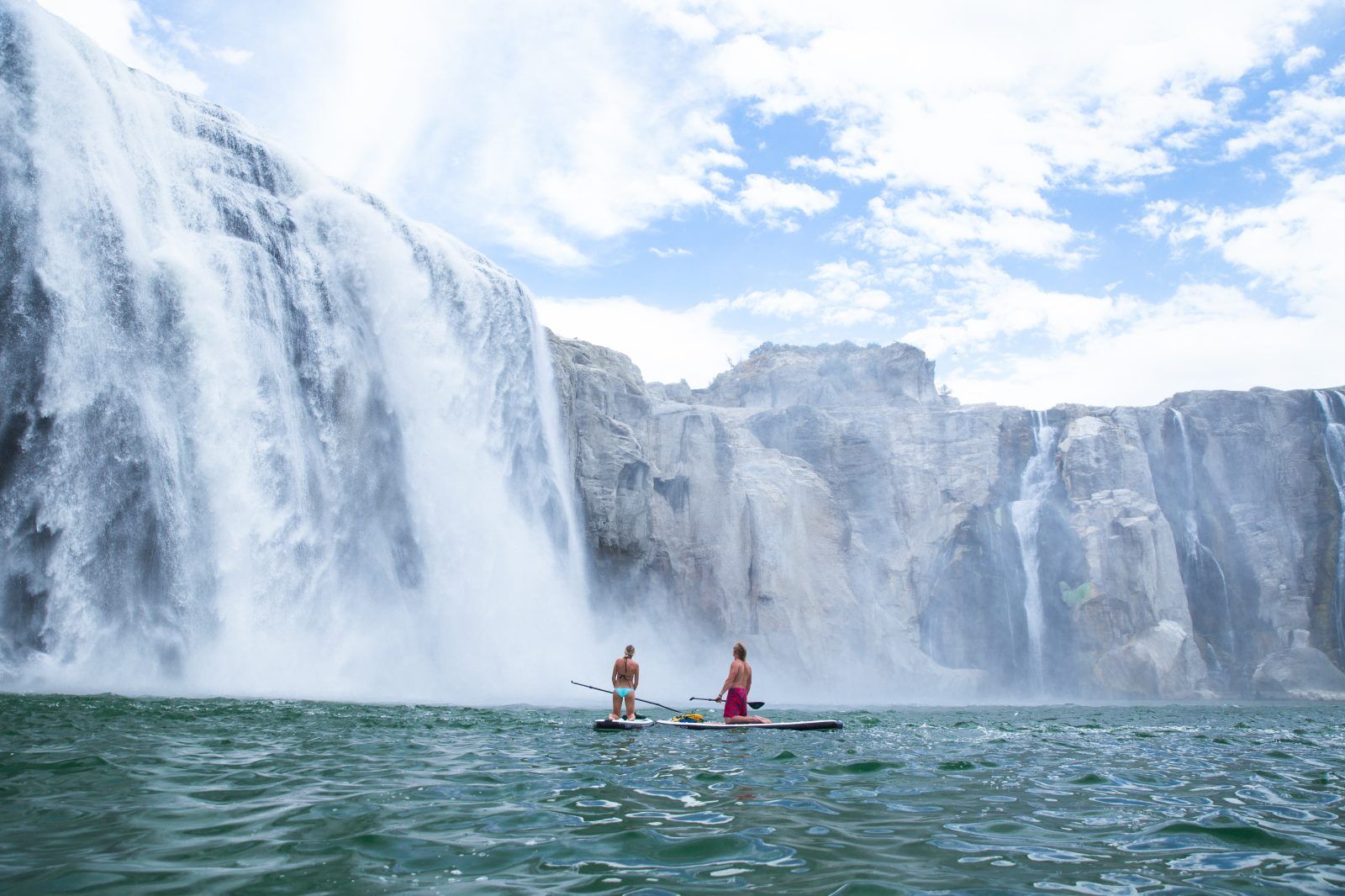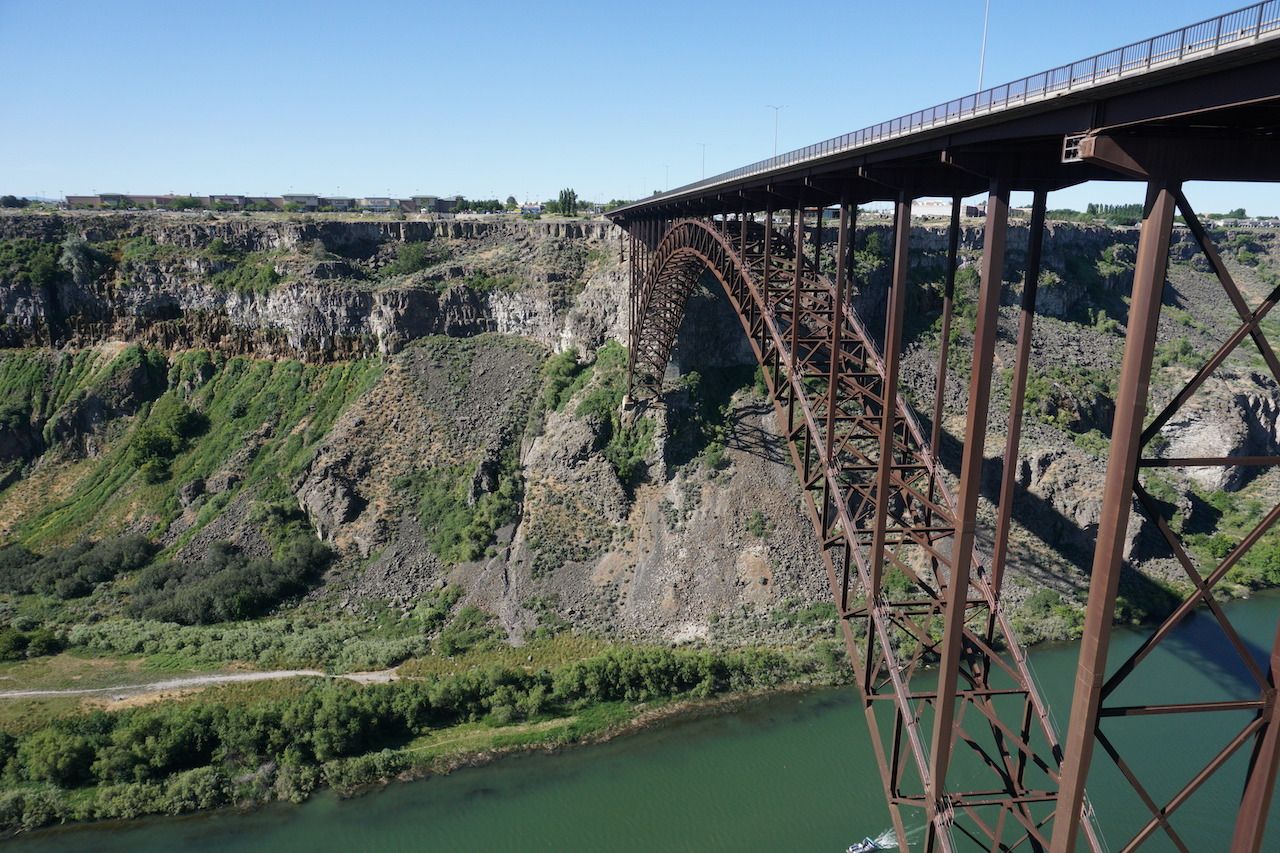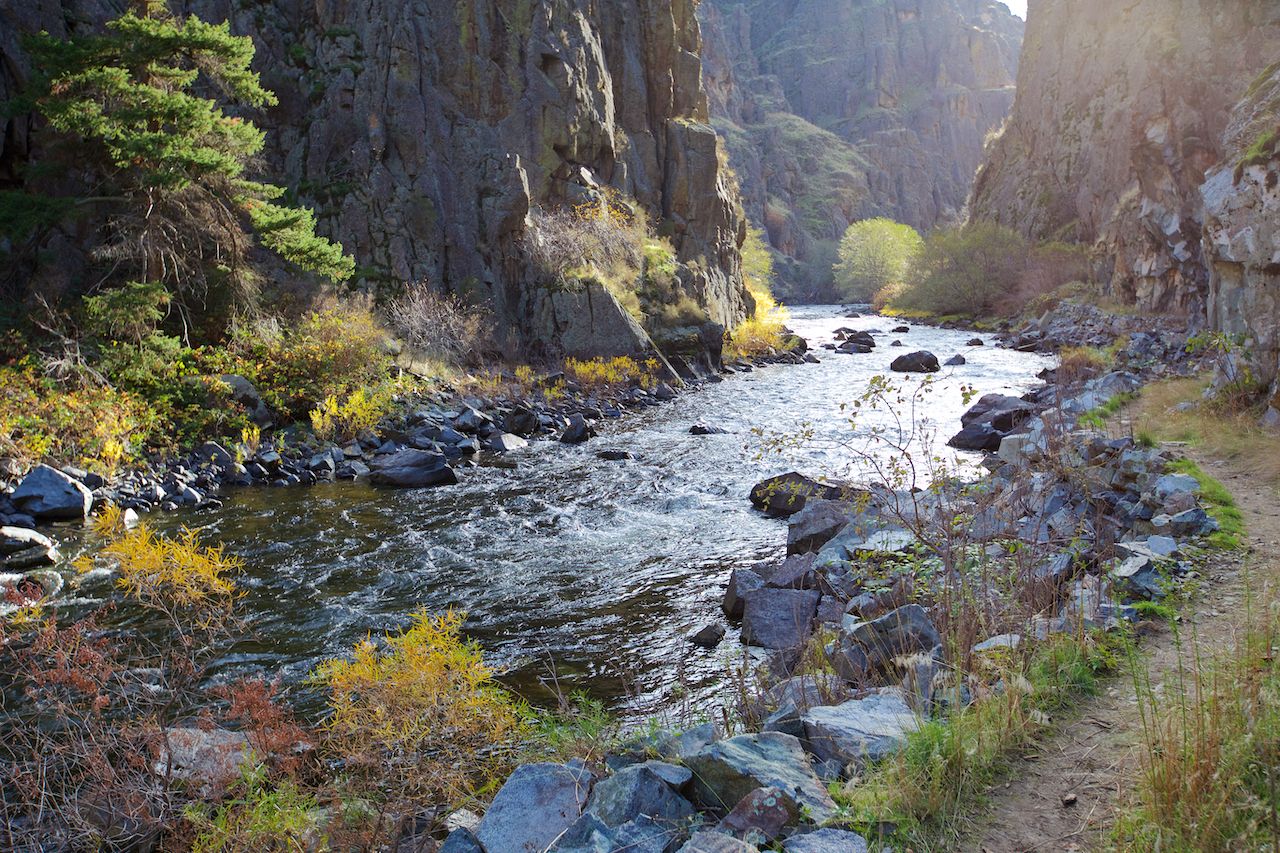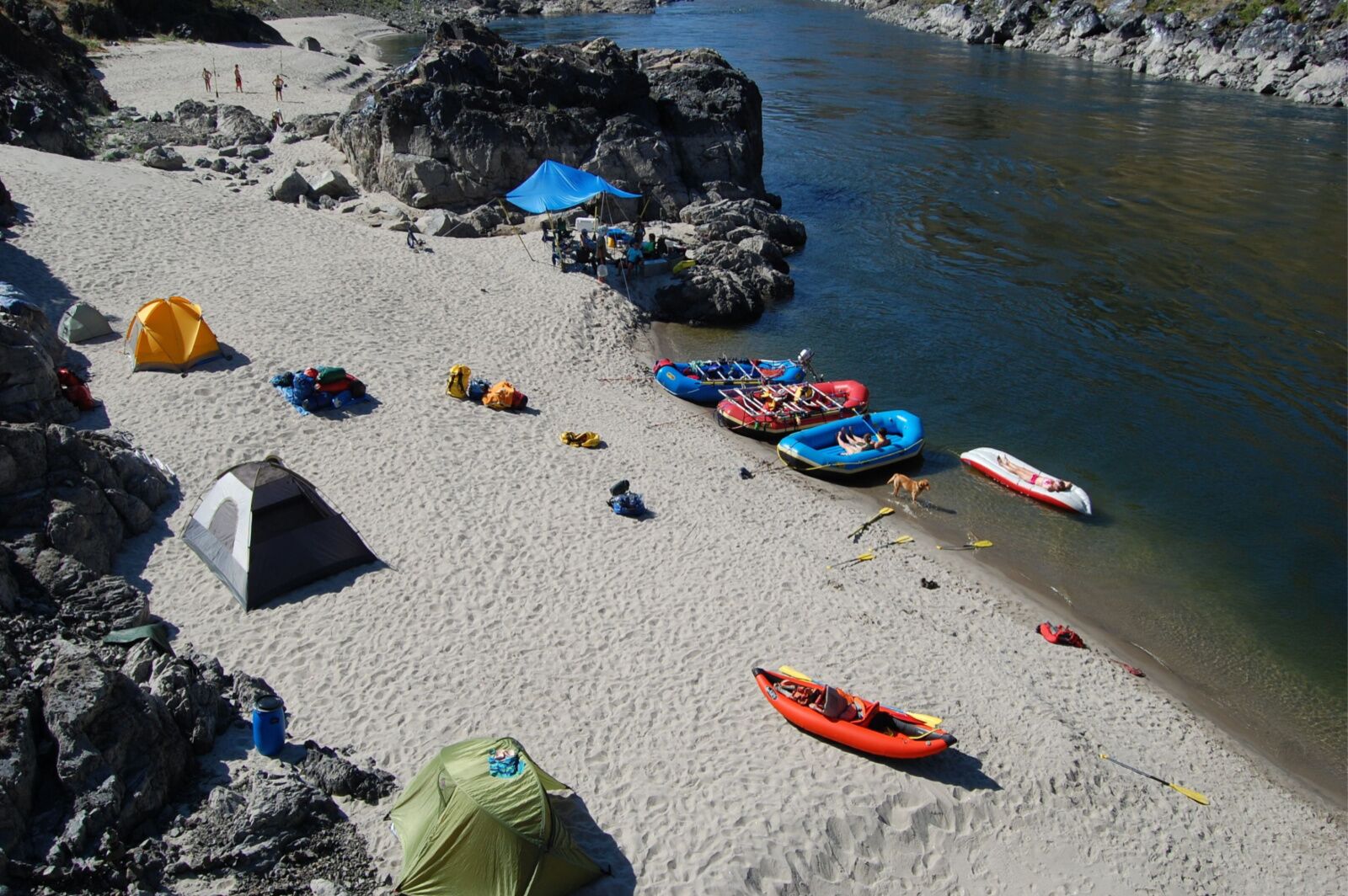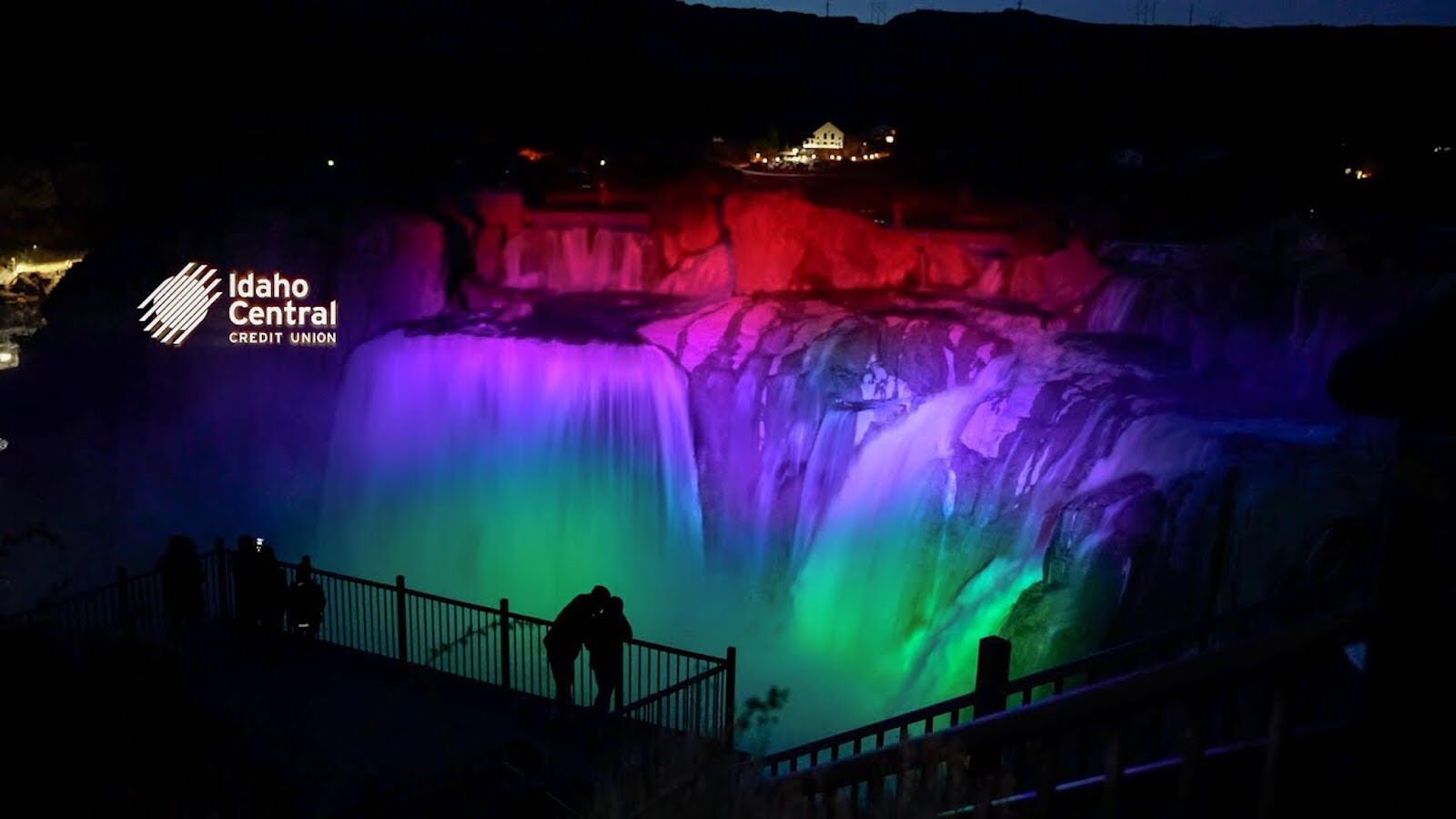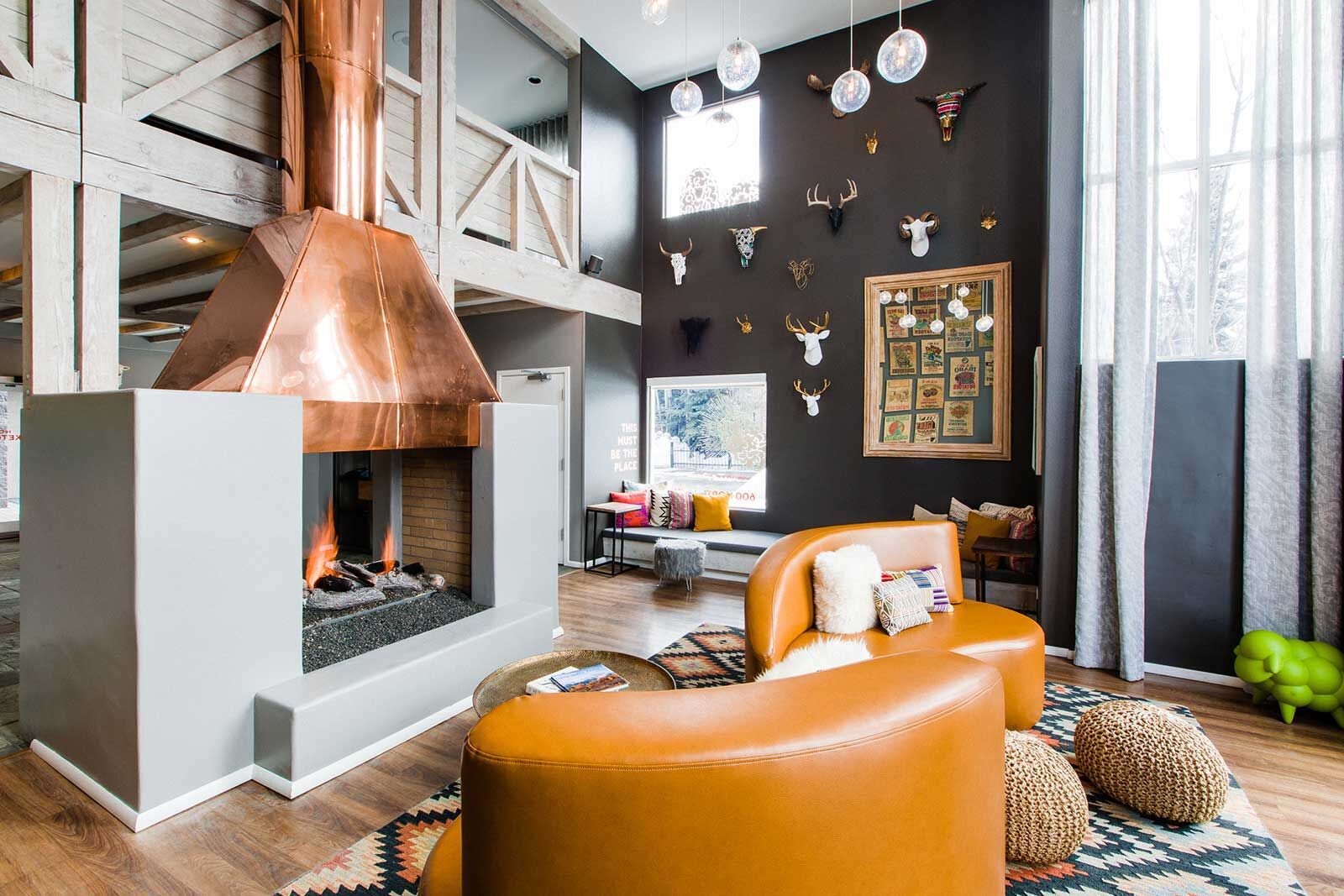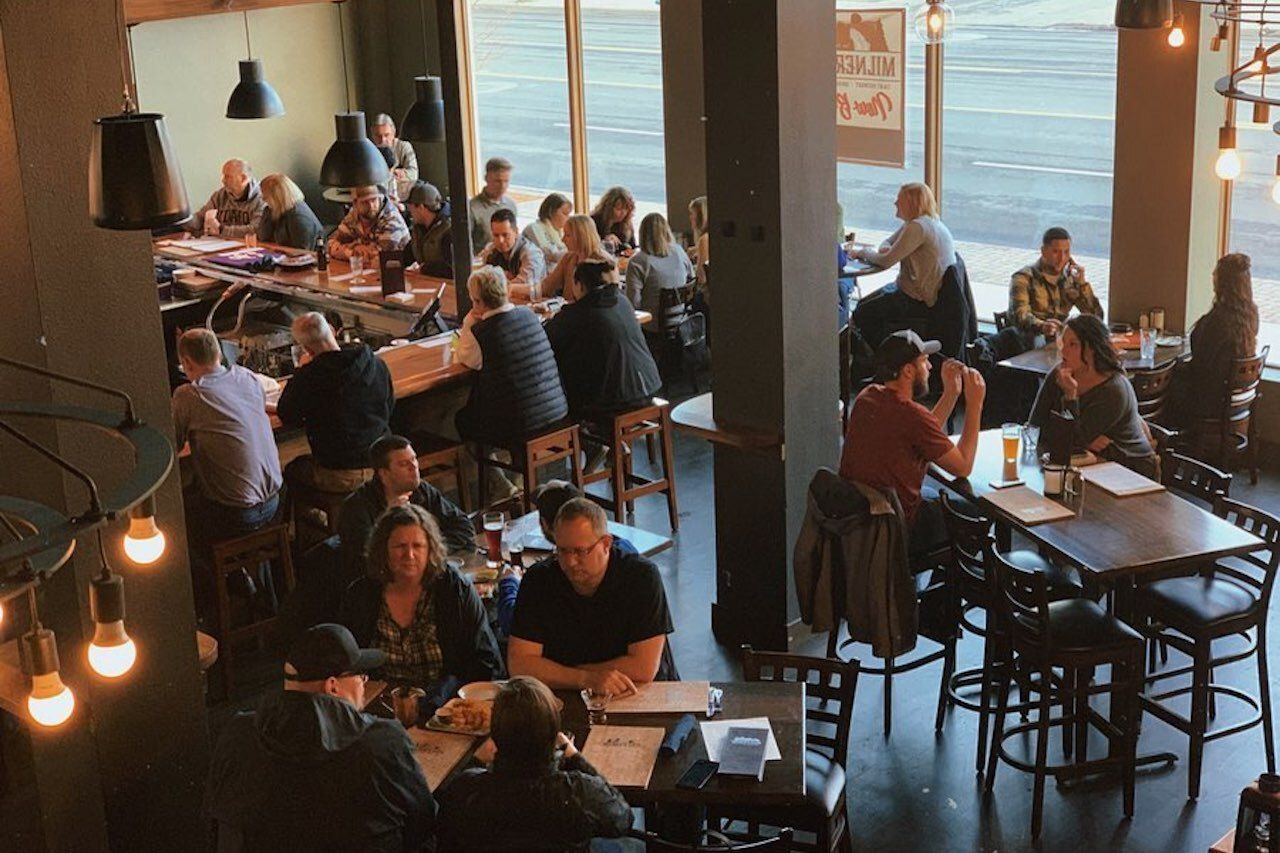When you think of waterfalls in North America, there’s a good chance that Niagara Falls comes to mind first. While Niagara is certainly majestic, it’s not even close to the highest. Falls in Yosemite and Hawaii are taller by a wide margin. But what’s even more surprising is that waterfalls in Idaho like Shoshone Falls, are larger, too. But Idaho probably doesn’t crack your top 10 list of states with epics falls. But it should.
Idaho is home to some of the country’s most stunning natural beauty, not least of which is Shoshone Falls. Dubbed the “Niagara Falls of the West,” Shoshone sits just outside Twin Falls and it surpasses Niagara in height by nearly 50 feet. While the falls themselves are an ideal destination for sightseeing, the broader Twin Falls area is perfect for those craving outdoor adventure plus a solid brewery and culinary scene. From kayaking on the Snake River Canyon to exploring the city of Twin Falls itself, here’s how to make the most out of your visit to the Niagara Falls of the West.
